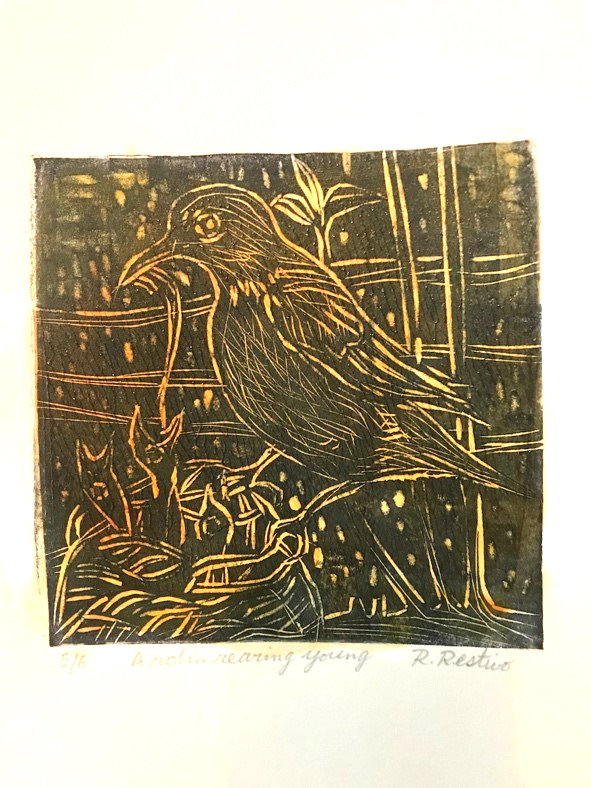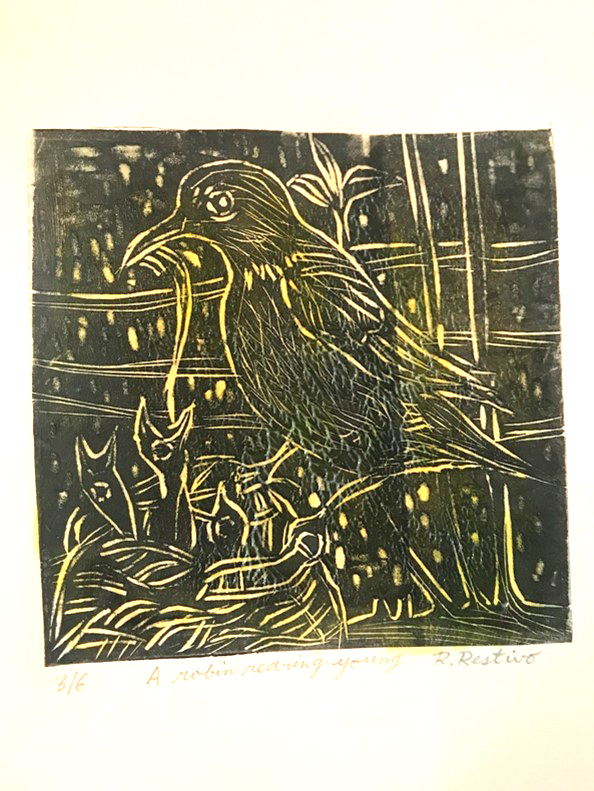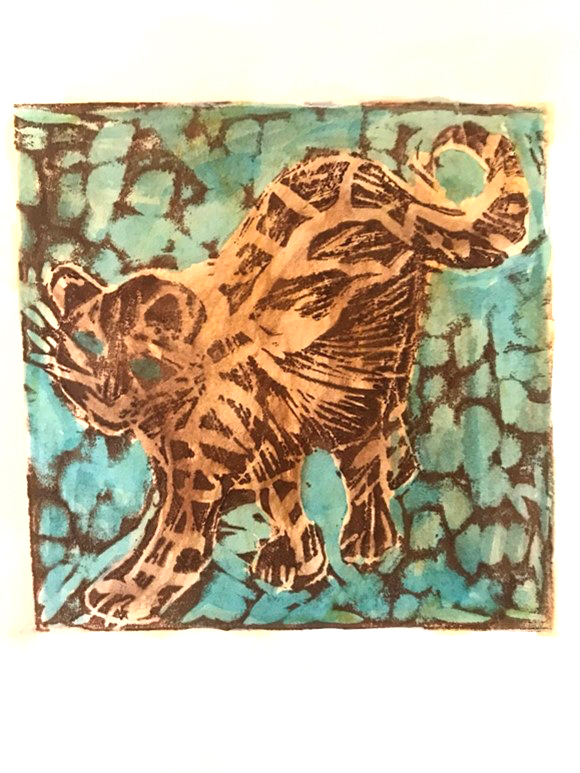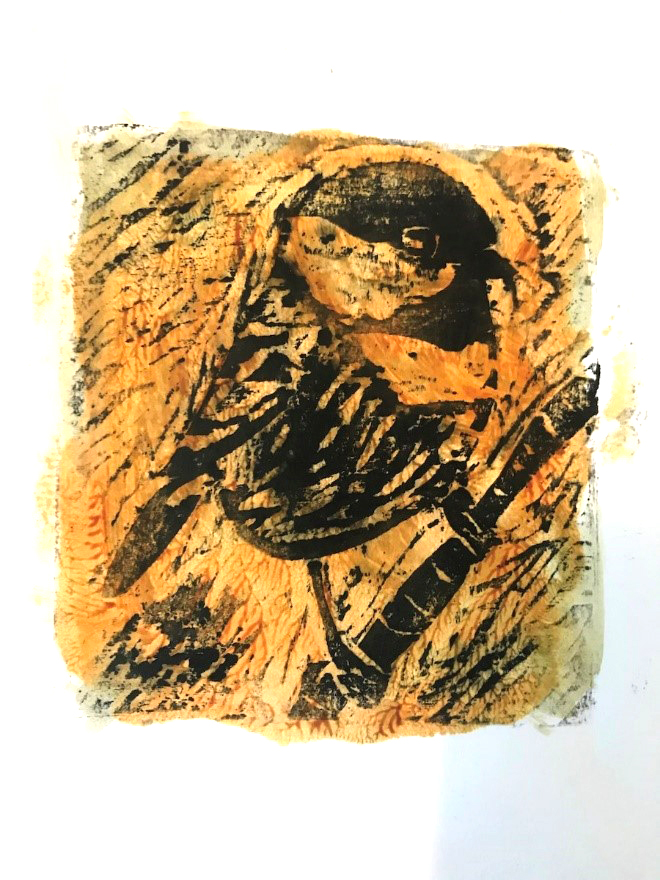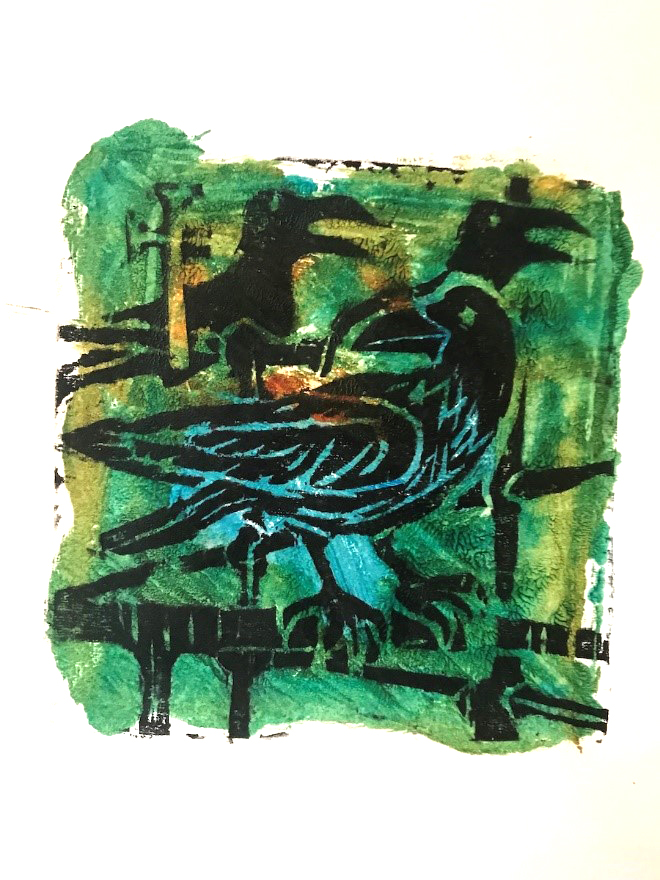by Rod Restivo
Traditionally, encaustic printmaking made use of coloured beeswax heated on an aluminum sheet placed on a hotplate in order to make an image. Printmakers can provide a sort of encaustic finish look to their prints with the following procedures I experimented with. This will produce a monoprint.
The following procedures using acrylic mediums can recreate this encaustic wax appearance. It should be noted at the outset that use will be made of Golden Open acrylics and mediums that remain moist for an extended time and are thus suitable for monoprinting. They can be mixed with Golden heavy body acrylics and mediums if one wants to speed up the drying time.
1) The most straight-forward approach will be to use Golden heavy gel (matte) mixed with Golden Open acrylic medium (gloss) in a ratio of 1:3, respectively. As noted above, the monoprint technique that is to follow uses Golden Open acrylic medium since the heavy gel on its own would dry too quickly.
The back of a clear acrylic plate will have an outline of the print image traced onto it. The above-mentioned mediums are brushed onto the top of this acrylic plate using a bristle brush or scraped on with a plastic palette knife. The mediums should be applied in a thin layer. A second layer can always be added after the print has partially dried.
To give a wax-like appearance, a few drops of Golden fluid acrylic quinacridone/nickel azo gold is applied and mixed with the mediums. Other modern acrylics can also be added such as phthalo blue (green shade), indian yellow hue (quinacridone/nickel azo yellow/arylide yellow) or naphthol red light (see examples in photos) .
For registration purposes, the acrylic plate coated with mediums can be laid on top of the print. The mediums are transferred onto the print using hand pressure. The print and the acrylic plate can be turned over, so that the print lies on top of the acrylic plate and further hand pressure or hand burnishers can be applied.
2) Alternatively, to create a yellow acrylic wax-like appearance, add a couple of drops of Golden fluid Hansa yellow medium and quinacridone/nickel azo gold to Golden soft gel (semi-gloss) with a few drops of Golden acrylic glazing liquid (gloss). This gives a wax-like surface with the viscosity of yogurt and the colour of warm liquid beeswax. The transfer process is the same as the original method.
3) The best procedure for acrylic encaustic printmaking is to thinly brush (or scrape with a plastic palette or a small strip of plexiglass) Golden Open acrylic gel (matte) onto a clear acrylic sheet. You may add 4 drops of Open acrylic medium (gloss) in order to create a mixture of gloss and matte finish. Add 4 drops of Golden fluid Indian yellow hue and 3 drops of quinacridone/nickel azo gold and mix the mediums and acrylics. The printing process is the same as the original.
Here are examples of acrylic encaustic printmaking showing prints with different colors of the medium-gel mix.



